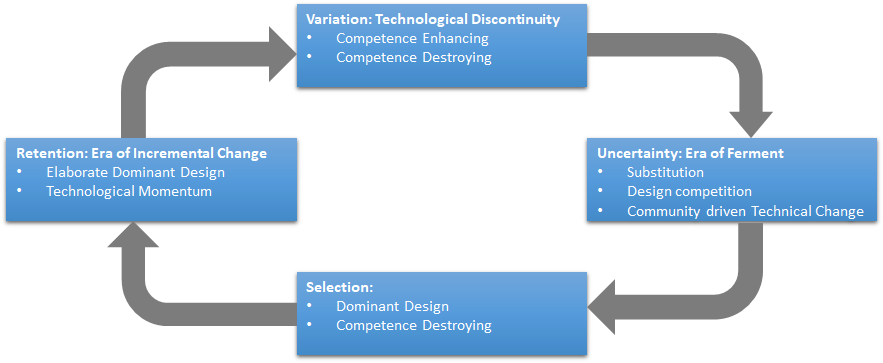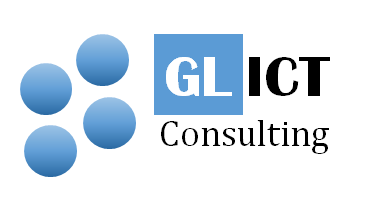
Today we are witnessing an ever increasing number of emerging technologies being exploited by startups using new business models. For those of us who a trying to evaluate “new-tech” business opportunities, understanding the key factors that will determine success or failure of a tech startup project is a good starting point.
A good model that helps us understand how new technologies are adopted by society is the Technology Lifecycle Model developed by Michael Tushman, a U.S based management adviser and Professor of Business Administration at Harvard Business School who is known for his work on on disruptive innovation. Tushman’s Technology Lifecycle Model describes how innovation and successful adoption of new technology occurs in 4 phases. This model is depicted below.

Source: Tushman and Rosenkopf (1992)
Variation: Technological Discontinuity
Technological discontinuities are rare, unpredictable innovations. These advance a relevant technological frontier by an order of magnitude which involves a fundamentally different product or process design.
Discontinuities can be either “competence enhancing” or “competence destroying”:
- Competence enhancing discontinuities build on existing technological know-how
- Competence destroying discontinuities are based on different technological knowledge or concepts which render expertise on existing technology obsolete
Furthermore, Technological discontinuities can be in the form of “product” or “process” discontinuities
- Product discontinuities are different product forms which command a decisive cost, performance or quality advantage over prior product forms
- Process discontinuities are different ways of making a product. These result in order of magnitude improvements in the cost or quality of the product
Uncertainty: Era of Ferment
Fierce competition for dominance between old and new technologies. Practitioners of old technologies focus on improving performance. Practitioners of new technologies also compete among each other designing variants in order to differentiate (e.g. on cost or features)
Selection: Dominant Design
A dominant design emerges among technological variations. This is propagated as the “industry standard” among technological variations, marking the end of the era of ferment
Retention: Era of Incremental Change
Technical progress driven by numerous incremental innovations, competition shifts from product to process innovation
Conclusion
Application of Tushman’s Technology lifecycle model for each new idea will not guarantee success. However, by considering the factors that determine how new technology is adopted by society, you can identify the risks that your “new-tech” project will need to overcome to succeed.
